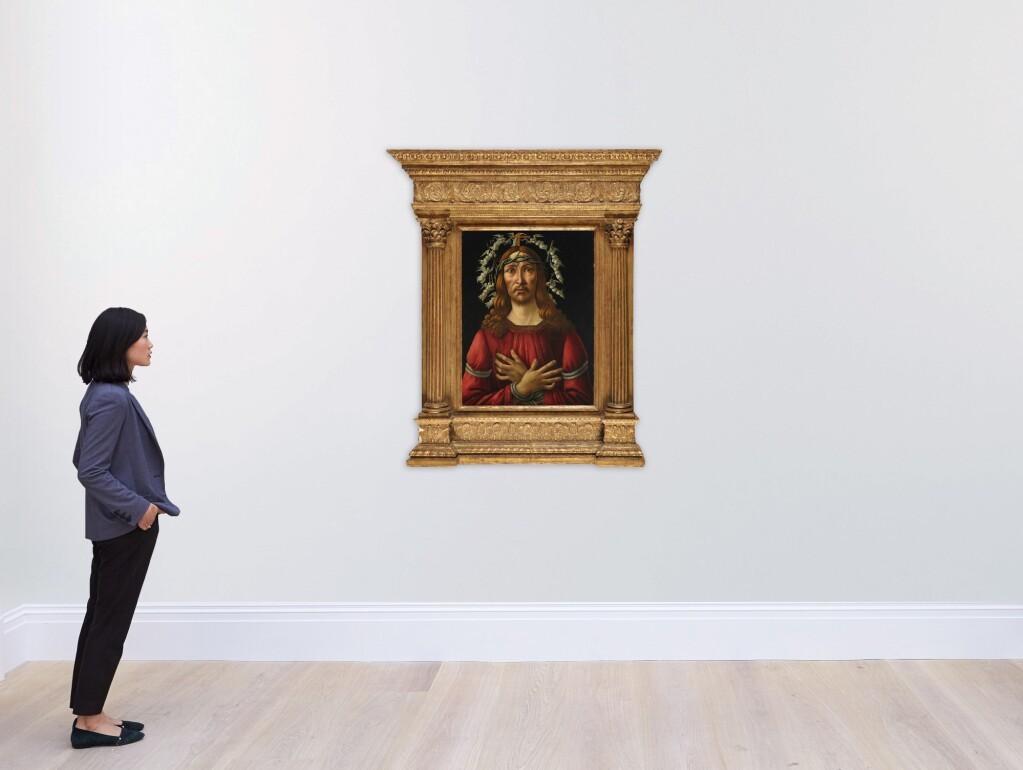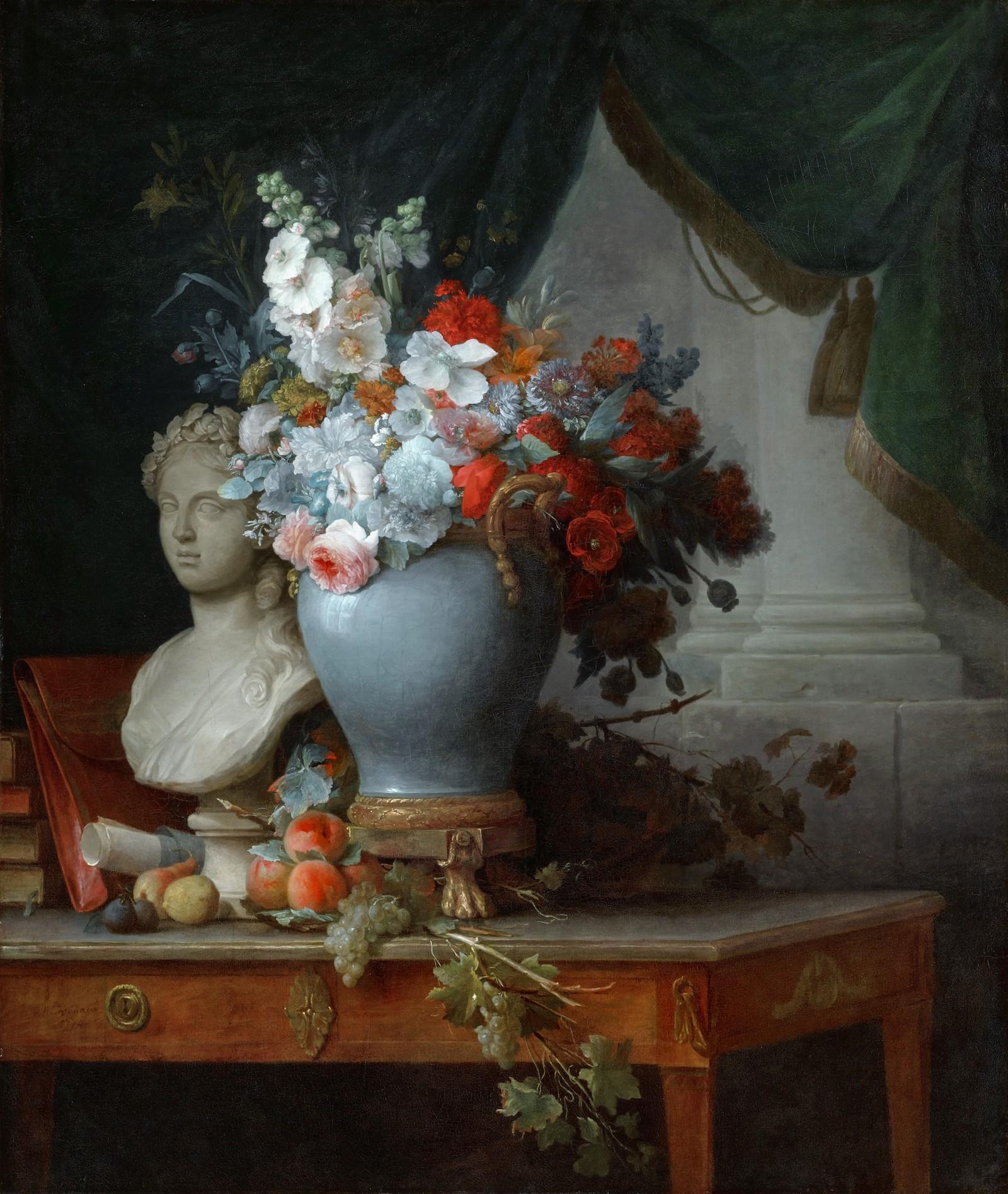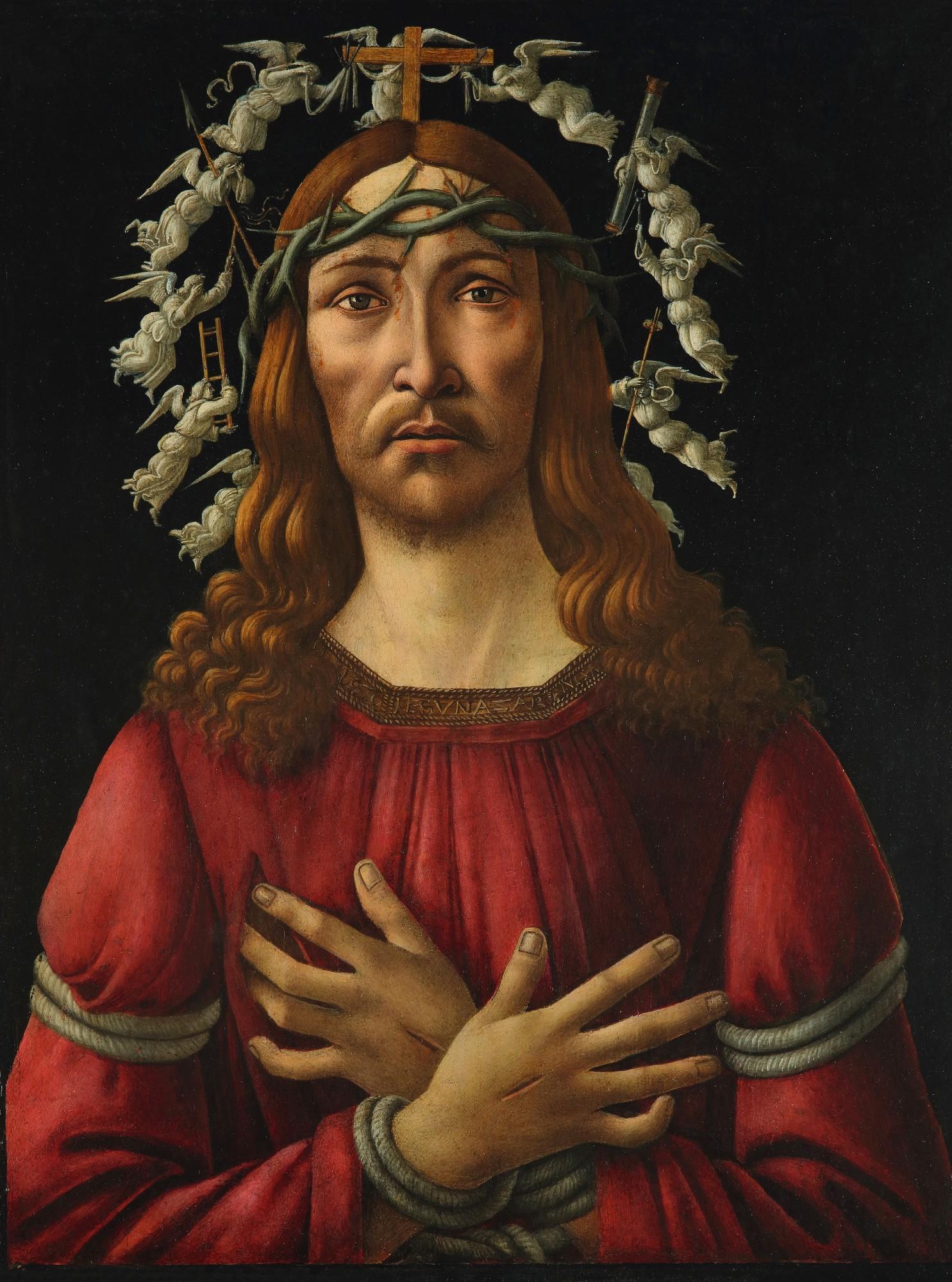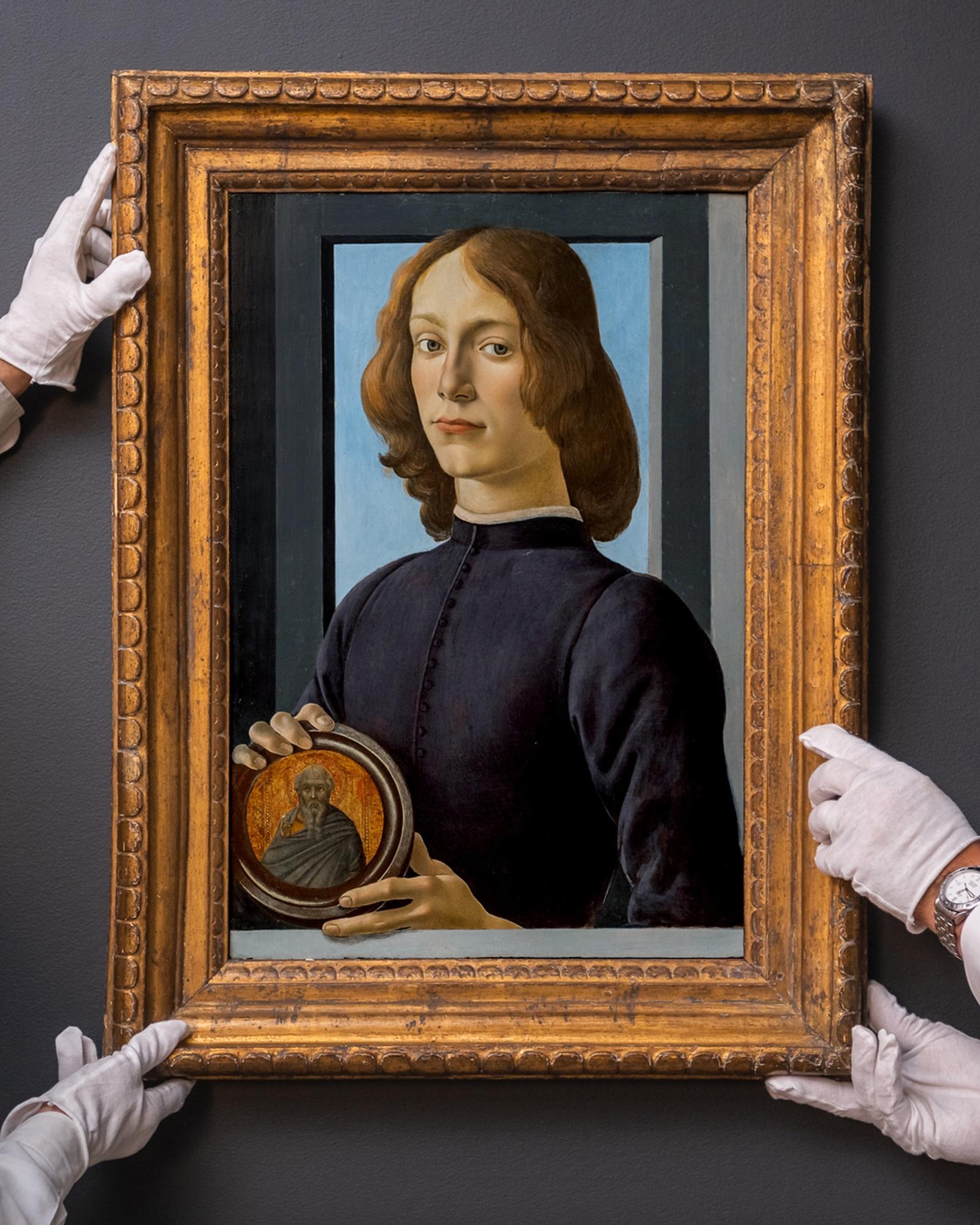So what happened this year? Well first off, the sale as a whole proved successful, generating $76 million ($91 with buyer’s fees). This success was not achieved by the Botticelli, as many seemed to expect, but rather by record-breaking sales of several smaller paintings by lesser-known artists including Anne Vallayer-Coster, Sophie Frémiet Rude, Peter van Mol, and Nicolaes Pickenoy.

Sandro Botticelli, The Man of Sorrows. Sold: $45,419,700.
Although Sotheby’s sale of Sandro Botticelli’s The Man of Sorrows was proceeded by considerable hype and still managed to close with an impressive bid—45.4 million (with fees), the second-highest price ever achieved for a Botticelli—the sale was not as grand, nor the painting as ultimately expensive, as pre-sale estimates had led many to expect.
An interesting part of the painting’s disappointing performance in this installment of Sotheby’s Old Masters sale is that it occurred nearly one year after another unusual Botticelli portrait—titled Young Man Holding a Roundel (c 1480)—went for a record-smashing $92.2 million at the same house.

Anne Vallayer-Coster, Still life of flowers in a vase on a table beside a bust of Flora, with fruit and other objects with a curtain beyond, 1774. Estimate: $1,500,000 - 2,500,000. Sold: 1,835,000.
As for the Botticelli, the final hammer price of $39.3 million fell notably short of pre-sale estimates, “in excess of $40 million.” Additionally, the bidding itself was rather slow-paced. At one point mid-sale, the bizarrely mild bid increase of $0.2 million was proffered between bids growing in increments of $1 million. In the end, the final hammer price was achieved with an even smaller bid increase from $39.2 to 39.3 million.
The above scenario, although it may well prove to be a blip of an occurrence rather than a change of economic winds, nevertheless prompted this author to reflect on the manner in which art auctions have changed in the last year or so—be it through the sale of NFT videos, the acceptance of cryptocurrency as payment, the climbing rates of late-career artists, or the current economic state of the world at large.
In our reporting of last year’s aforementioned sale of Young Man Holding a Roundel, Old Master dealer Robert Simon was quoted observing that, “while the pandemic has been economically devastating to so many worldwide, the truth is that much of the potential audience for such a painting has been unscathed by it.”
Today, it’s hard not to wonder if that remains true.






























